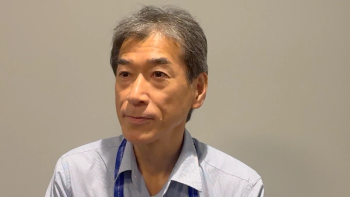
- Oncology Vol 28 No 4_Suppl_1
- Volume 28
- Issue 4_Suppl_1
(S029) Patient-Reported Voice and Speech Outcomes and Their Clinical and Dosimetric Predictors After Chemo-IMRT of Oropharyngeal Cancer: A Prospective Longitudinal Study
Although adverse sequelae of chemoradiation (CRT) for head and neck cancer (HNC) have been extensively detailed in recent years, the effects of CRT on voice and speech quality remain poorly characterized. We investigated changes in patient-reported voice and speech quality (VSQ) after CRT in two prospective studies of organ-sparing CRT for locally advanced oropharyngeal cancer (OPC).
Jeffrey M. Vainshtein, MD, Kent A. Griffith, MS, Felix Y. Feng, MD, Karen A. Vineberg, MS, Douglas B. Chepeha, MD, MSPH, Avraham Eisbruch, MD; University of Michigan
Purpose and Objectives: Although adverse sequelae of chemoradiation (CRT) for head and neck cancer (HNC) have been extensively detailed in recent years, the effects of CRT on voice and speech quality remain poorly characterized. We investigated changes in patient-reported voice and speech quality (VSQ) after CRT in two prospective studies of organ-sparing CRT for locally advanced oropharyngeal cancer (OPC).
Materials and Methods: A total of 91 patients with stage III/IV OPC treated at our institution in two prospective studies of definitive CRT from 2003–2011 were included. All received whole-field neck intensity-modulated radiation therapy (IMRT) intended to minimize dose to the pharyngeal constrictors, salivary glands, oral cavity (OC), glottic larynx (GL), supraglottic larynx, and esophagus. Patient-reported VSQ (PRVSQ) was assessed by the Communication Domain of the Head and Neck Quality of Life (HNQOL-C) questionnaire and the speech question of the University of Washington QOL (UWQOL-S) questionnaire at pretreatment and 3, 6, 12, 18, and 24 months after CRT. Factors associated with worsening PRVSQ (defined as a decrease in HNQOL-C or UWQOL-S from baseline) were assessed.
Results: PRVSQ decreased maximally at 1 month, with 68% and 41% of patients reporting worsening HNQOL-C and UWQOL-S scores compared with baseline, and improved thereafter, with recovery of mean population HNQOL-C and UWQOL-S scores to baseline by 12 and 18 months, respectively. At 12 months, however, 33% and 28% of patients continued to report lower HNQOL-C and UWQOL-S scores compared with pretreatment, respectively. In contrast to patient-reported effects, observer-rated larynx toxicity was rare, with only grade 1 toxicity reported by 5% at 6 months and 0% at 12 months. Of patients with mean GL dose of < 20 Gy, > 20–30 Gy, > 30–40 Gy, > 40–50 Gy, and > 50 Gy, 25%, 33%, 59%, 50%, and 64% reported worse HNQOL-C scores at 6 months compared with pretreatment, which persisted at 12 months in 10%, 32%, 25%, 30%, and 63% of patients, respectively (Ï2 for trend: P = .02 at 6 months; P = .011 at 12 months). Results using a worsening UWQOL-S score endpoint were similar. Mean GL dose, mean OC dose, N2/3 stage, and shorter time since RT completion were associated with worsening HNQOL-S (P < .05) on univariate analysis. On multivariate analysis, mean GL dose remained independently predictive for worsening HNQOL-S after CRT (odds ratio [OR] = 1.08 per Gy; P < .01).
Conclusions: In the largest prospective study to assess voice and speech outcomes after CRT for OPC, worsening VSQ was frequently reported by patients, underrecognized by clinicians, and independently associated with dose to the GL. These findings support limiting mean GL dose to < 20 Gy during whole-neck IMRT for HNC when the larynx is not a target.
Proceedings of the 96th Annual Meeting of the American Radium Society -
Articles in this issue
Newsletter
Stay up to date on recent advances in the multidisciplinary approach to cancer.
















































































